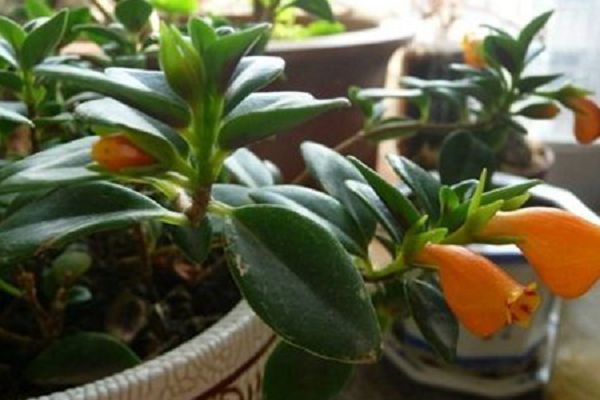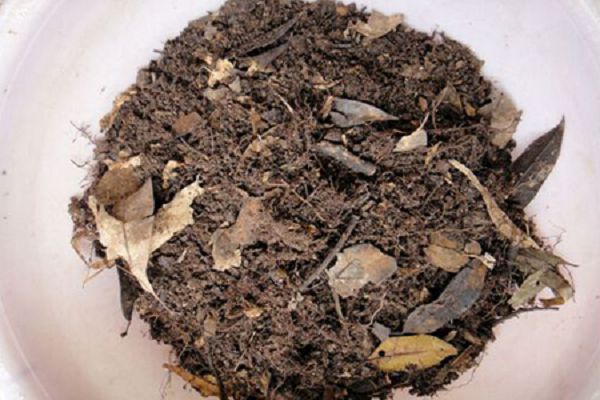How to grow potted orchids

Orchids, also known as spring orchids, national fragrances, etc., are epiphytic or terrestrial herbs of the genus Orchidaceae. Orchids have been cultivated in China for more than 2000 years. Chinese people have always regarded orchids as a symbol of nobility and elegance. and together with "plum, bamboo, chrysanthemum" known as the "four gentlemen", has a very high ornamental value and cultivation value, let's take a look.
Growth habits of orchids
Orchids originally grow in hilly areas or mountain springs, some in wooded valleys with sloping slopes, or in rocky crevices with deeper soil layers. Due to the different types of orchids, their living habits are also different. Spring orchid likes yin and summer orchid likes yang, but both like warm and humid climate. The root system of orchid is distributed on the surface of the soil layer, which requires that the soil layer is rich in humus and has good properties of loose texture, water permeability, fertilizer and water conservation. The soil is acidic and the pH value is between 5.5 and 6.5. Orchids most avoid soot, dust, but also afraid of hot sun and torrential rain, air pollution is not conducive to orchid growth, the root system must have orchid symbiosis, otherwise poor growth.
Propagation methods of Orchid
1. Ramet: it can be carried out in both spring and autumn, usually every three years. All plants with dense pseudocorms can be ramified, and at least 5 connected pseudocorms should be preserved in each clump. Irrigation should be reduced before dividing plants to make the basin soil drier. When putting on the basin after ramet, first cover the bottom hole of the basin with broken tiles, then cover the basin with coarse stones, occupy the basin depth of 5cm, 1ax, 4pm, then put coarse-grained soil and a small amount of fine soil, and then plant it with sandy loam rich in humus.
2. Sowing: the orchid seed is very fine, there is only one underdeveloped embryo in the seed, the germination power is very low, and the seed coat is not easy to absorb water, so it can not germinate by conventional sowing, so it is necessary to use orchid or artificial medium to supply nutrients to germinate.
How to grow potted orchids.
1. Soil: the soil for orchid should be mainly humus, mainly humus soil or mountain humus soil. In the south, the humus soil of origin, commonly known as orchid mud, can also be artificially prepared into loose, aerated and permeable culture soil with saprophyllite, vermiculite and perlite. Generally, 8 parts of rotten leaf soil and 2 parts of river sand were mixed into culture soil, or 7 parts of rotten leaf soil, 2 parts of perlite, 1 part of river sand mixed culture soil, or 6 parts of rotten leaf soil (peat soil), 3 parts of compost soil and 1 part of river sand mixed culture soil.
2. Fertilization: orchid topdressing mostly uses liquid fertilizer or foliar fertilizer, and its concentration should be lighter than that of other flowers. Generally, in the growing season, about 15% of fully mature thin cake fertilizer water can be applied, or 0.1% urea fertilizer water plus 0.2% potassium dihydrogen phosphate fertilizer water, once every 15 days. 0.2% potassium dihydrogen phosphate or plant ash water can be sprayed to the leaf surface 2 times before flowering to the flowering stage to promote the development of roots, stems and flowers. Orchids are fleshy roots, do not apply unripe fertilizer, so as not to rot the roots.
3. Watering: watering orchids should be determined according to species, growth conditions and local climate, should be moist but not wet, dry but not dry, watering should not be too much or too little, and master the principle of not drying in autumn and not wet in winter. When the temperature is low in winter, the plant is in a dormant state, and watering should be controlled. Generally, it can be watered every 5-7 days, but the flowering magnolia in winter needs more water. It should be watered every 2-3 days in spring and autumn, and once or twice a day in summer.
4. Temperature: northern potted orchids should be moved indoors when the temperature drops to 5 ℃ before and after the Frost Festival, and windows should be opened frequently at the initial stage of entering the house to maintain ventilation. It is suitable to keep the room temperature about 10 ℃ in winter. Grain Rain later moved to the outside for maintenance. The suitable temperature for orchid growth is 16: 24 ℃. The indoor temperature is generally low in winter, 10: 12 ℃ in daytime and 5: 10 ℃ at night. The temperature and humidity should not be too high, and the temperature in summer should not exceed 30 ℃.
5. Lighting: orchids like shade and are afraid of direct light, so they should be shaded in spring, summer and autumn. For family orchids, in order to control the amount of light, it is best to put them on the balcony windowsill or under the eaves with bamboo shade, generally shading from 9 am to 6 pm, and opening the curtain after 6 pm in the morning and after 6 pm to make it accept scattered sunlight. In winter, it should be moved to the place where the scattered light is visible indoors, but direct sunlight should also be avoided. The shade tolerance of orchids was the strongest, followed by Jian Lan, while Chunlan and Cymbidium were weaker.
6. Pruning: plant pruning should be carried out in the process of orchid culture, such as when the old leaves are withered and yellow, which is beneficial to the growth of other leaves and can be ventilated. On the other hand, the leaves with diseases need to be pruned in time to prevent infection. In addition, scissors also need to be disinfected to prevent infection.
7. Change the pot: the orchid grows slowly, and the pot can be changed every 1 ~ 2 years after the flower fades. When putting on the basin, fill in tile grains, slag and so on about 3 cm at the bottom of the basin to facilitate drainage. Then, put into a layer of culture soil, and then put the orchid seedling into the middle of the basin, straighten the root straight and let it stretch naturally. Gently lift the orchid seedling in the middle of the filling, shake the flowerpot at the same time, so that the soil is closely combined with the root, when filling the soil 2cm away from the mouth of the basin, gently press it with your hand.
Points for attention of orchids
1. Orchids are mainly distributed in the southeast and southwest. More wild in the moist valley under the sparse forest and rock edge of the shade, so like warm, humid climate, like shade and dampness, require a shade of 70% to 90%, avoid high temperature, dryness and strong light.
2. The withered and yellow old leaves and disease and insect leaves should be cut off continuously in orchid cultivation to facilitate ventilation. After the flower buds are unearthed, each plant should leave a strong flower bud and the rest should be cut off so as not to consume too much nutrients and affect flowering in the coming year. After the flower fades, the flower stalk should be cut off.
3. Orchids should pay attention to cold protection in winter, terrestrial orchids have strong cold resistance, while orchids require higher overwintering temperature, so they should move indoors or use plastic sheds as soon as possible to avoid cold, and the room temperature should be kept at 10: 15 ℃. Indoor maintenance should pay attention to ventilation. The climate is getting warmer in spring, and gradually move the orchid to the courtyard or balcony.
4. Natural Rain Water, stream water, well water and river water are the best for orchid family cultivation. If tap water is used, it should be stored in a tank first, and then used after being exposed to the sun to remove bleach. If the flowers are watered with tap water for a long time, the cultivation substrate will be gradually alkalized.
5. During orchid culture, ferrous sulfate can be applied at regular intervals to increase soil acidity. In addition, watering orchids with fermented Amoy rice water can also keep the upper soil slightly acidic.
Related
- Is the orchid suitable for indoor use? Is it good for the body?
- How to prevent the empty root of orchids?
- What to do after the crab claw orchid is withered?
- Why are the leaves of orchids always yellow? Fertilizing and watering.
- Can the root of the gentleman orchid be saved if it is rotten?
- Diagnosis and treatment of cotton-blowing beetle insects in Cymbidium
- There is a way for a gentleman's orchid to rot.
- What is the most suitable temperature and humidity for the orchid?
- How to raise a gentleman's orchid? Cultivation techniques of Cymbidium
- How to prepare the nutritive soil for the cultivation of Cymbidium



